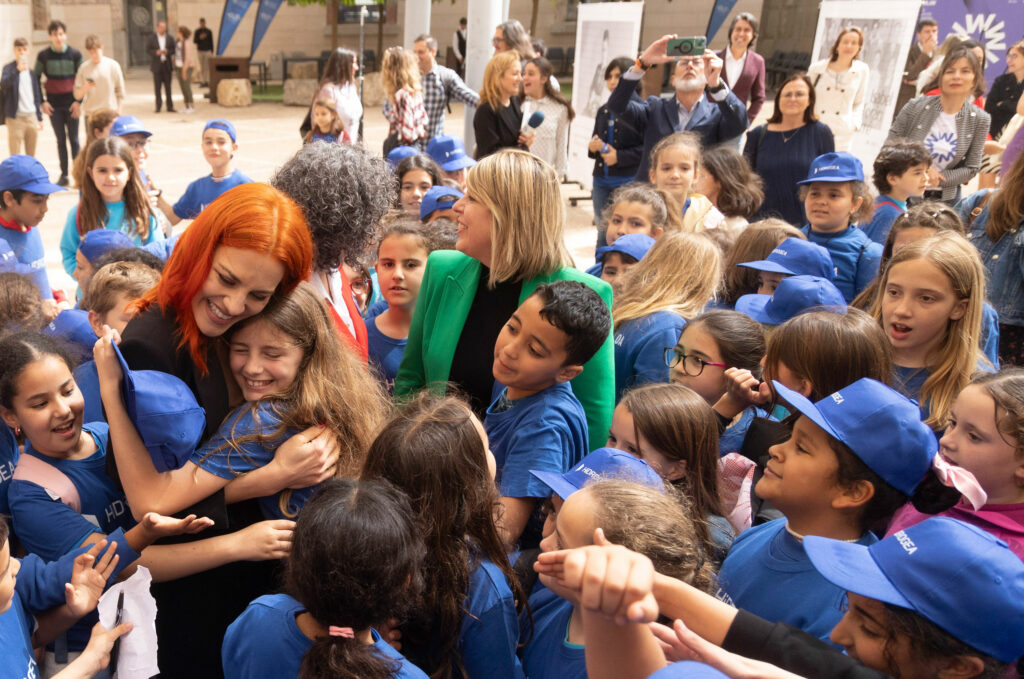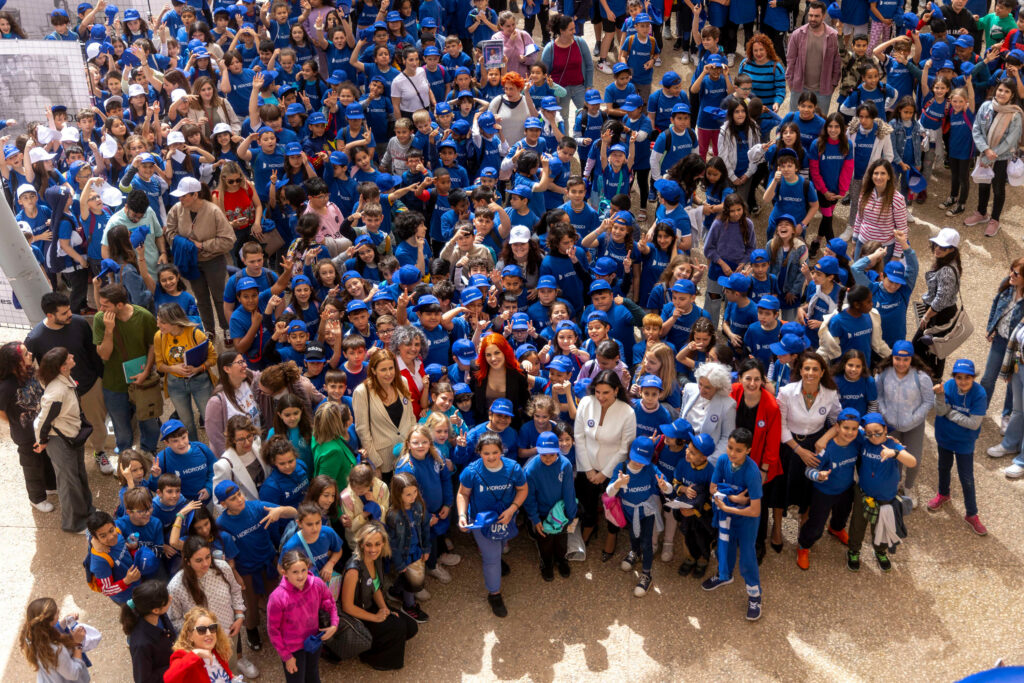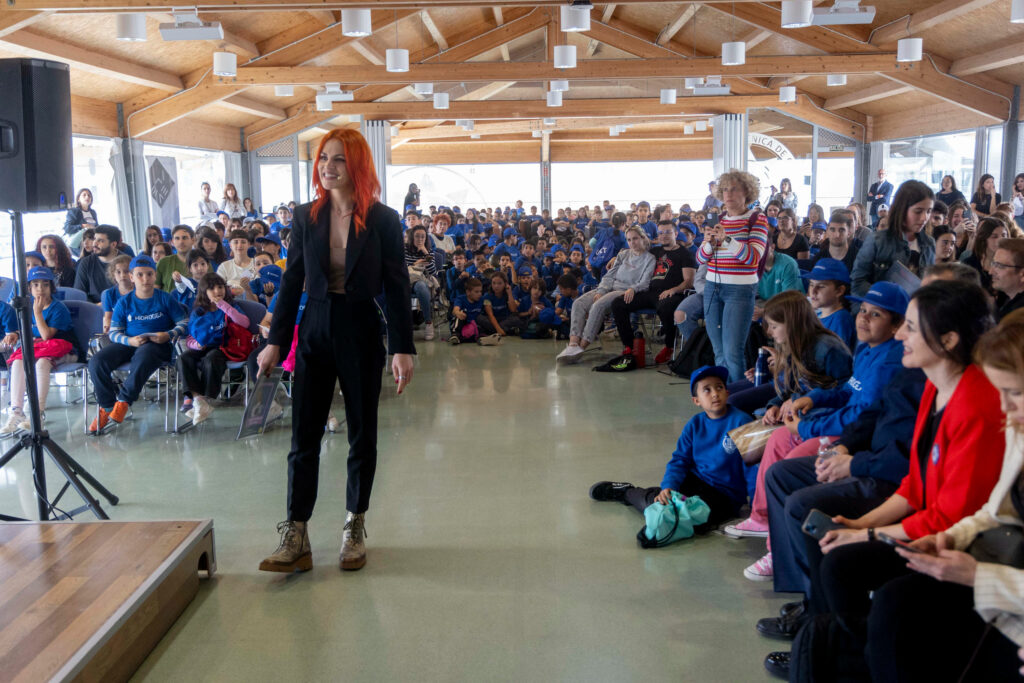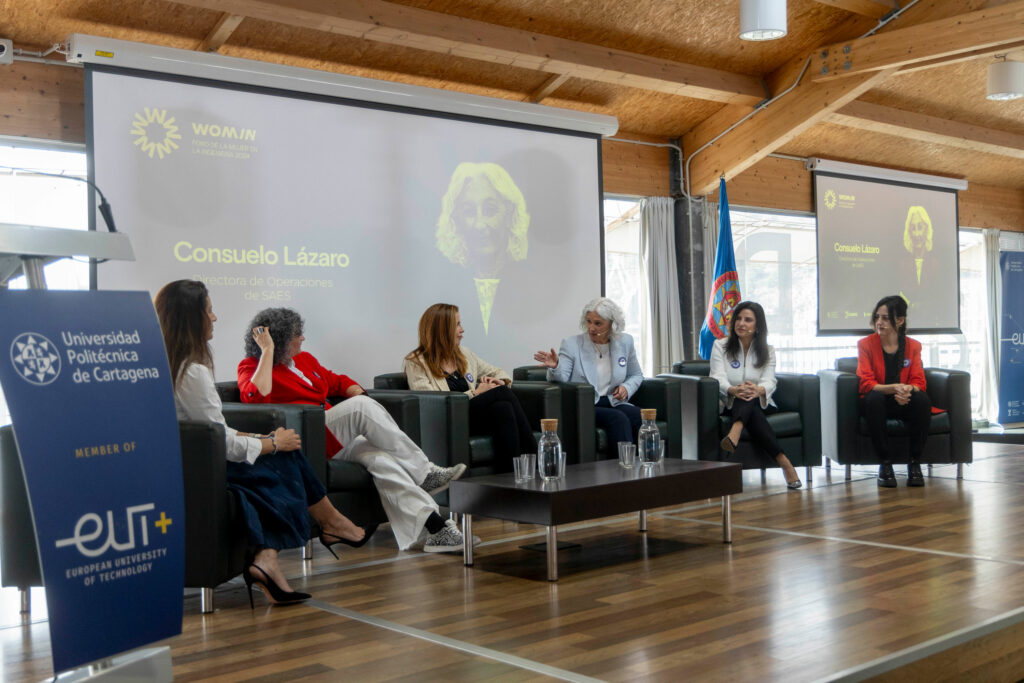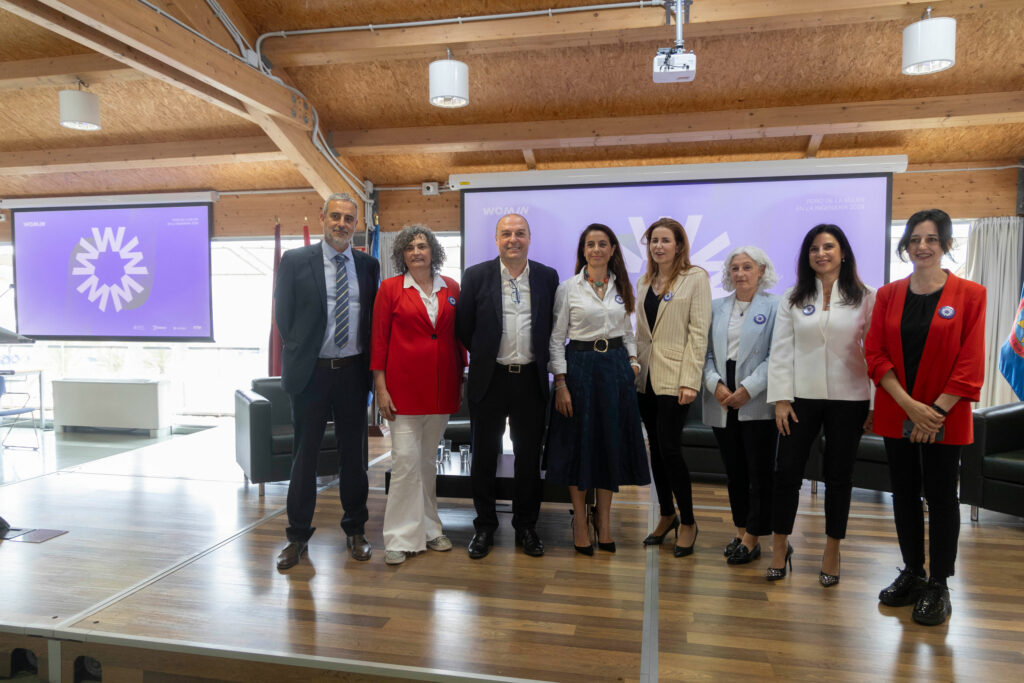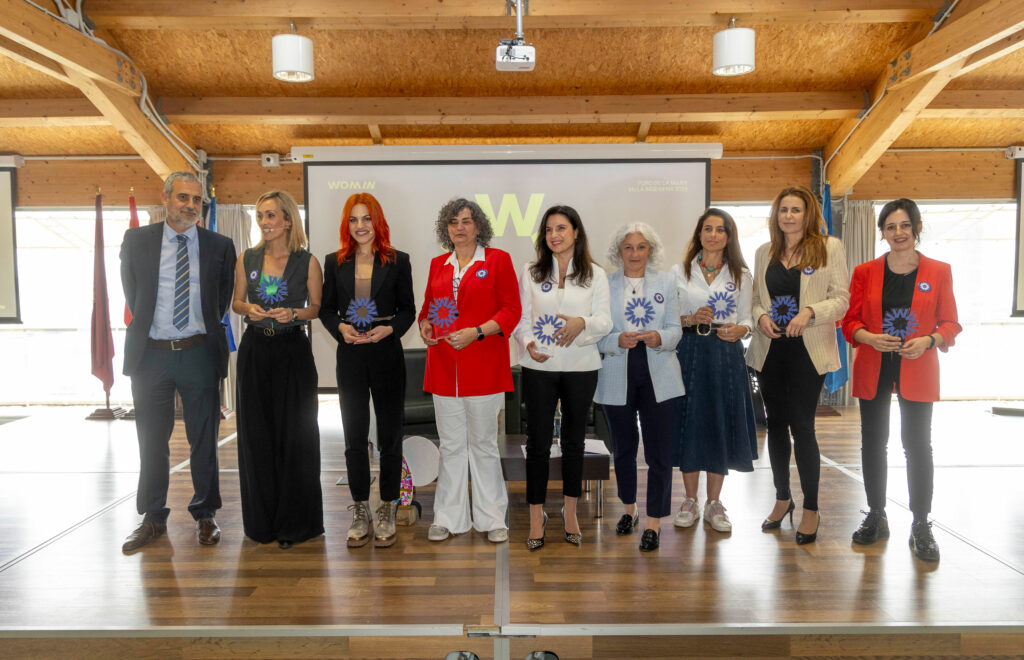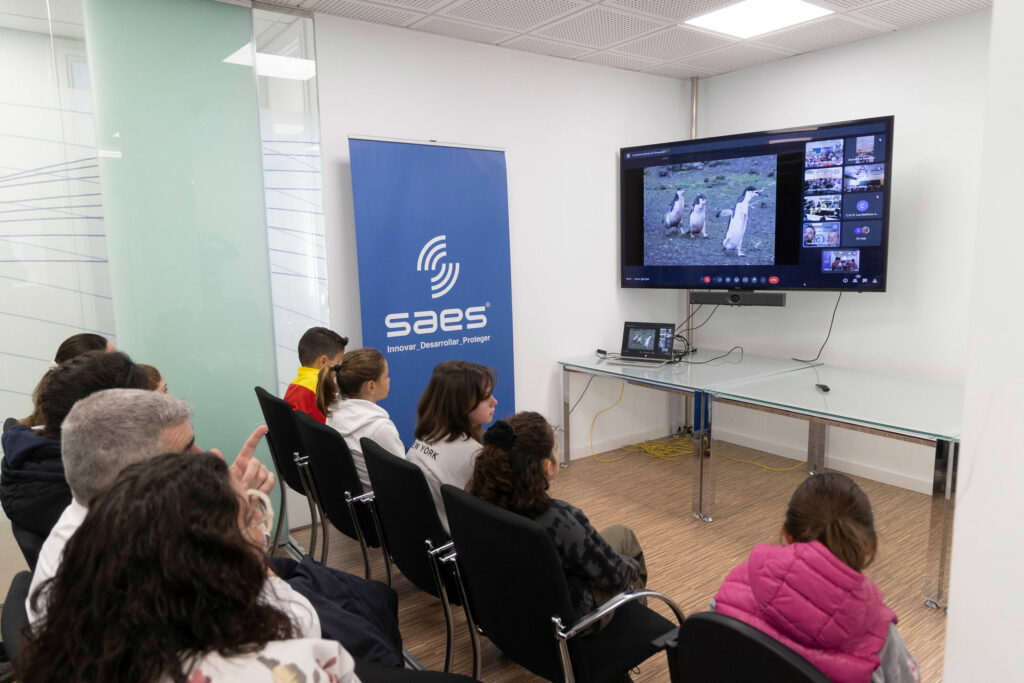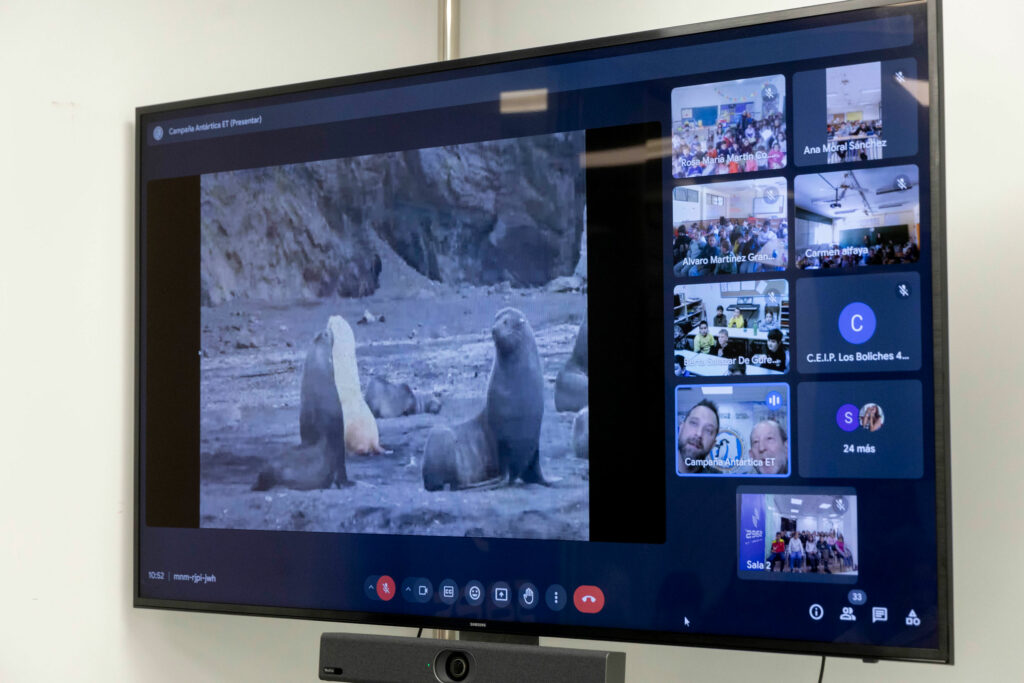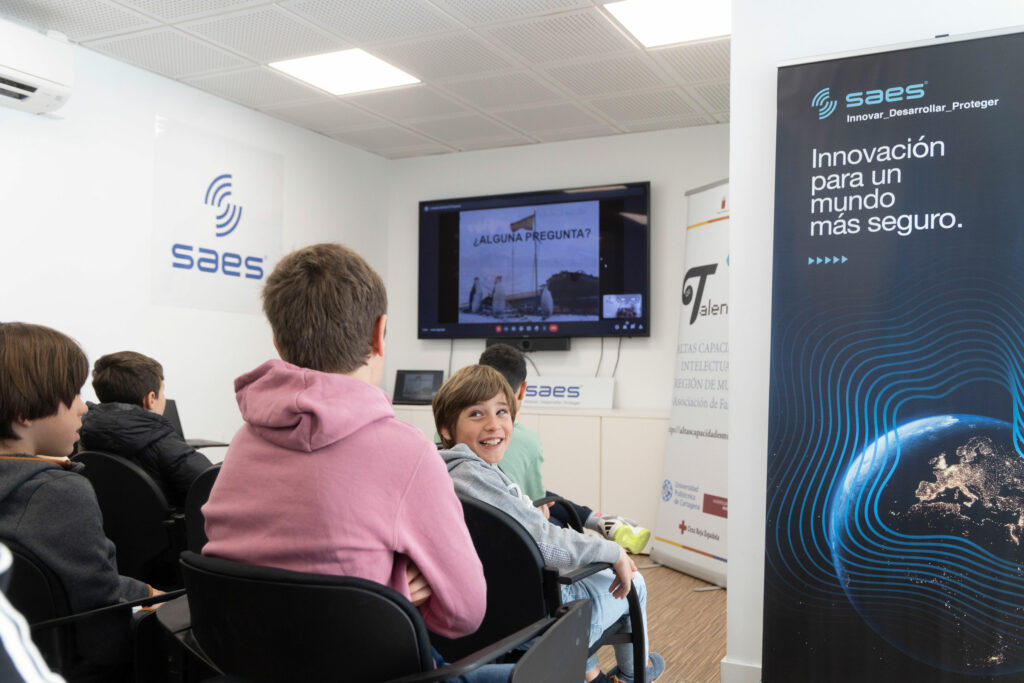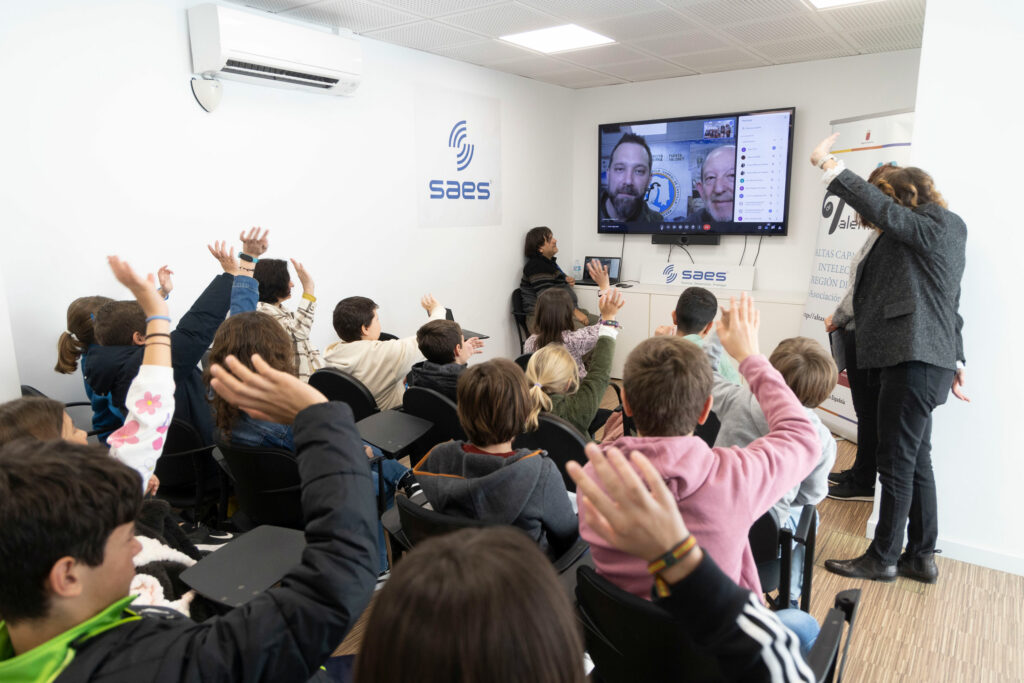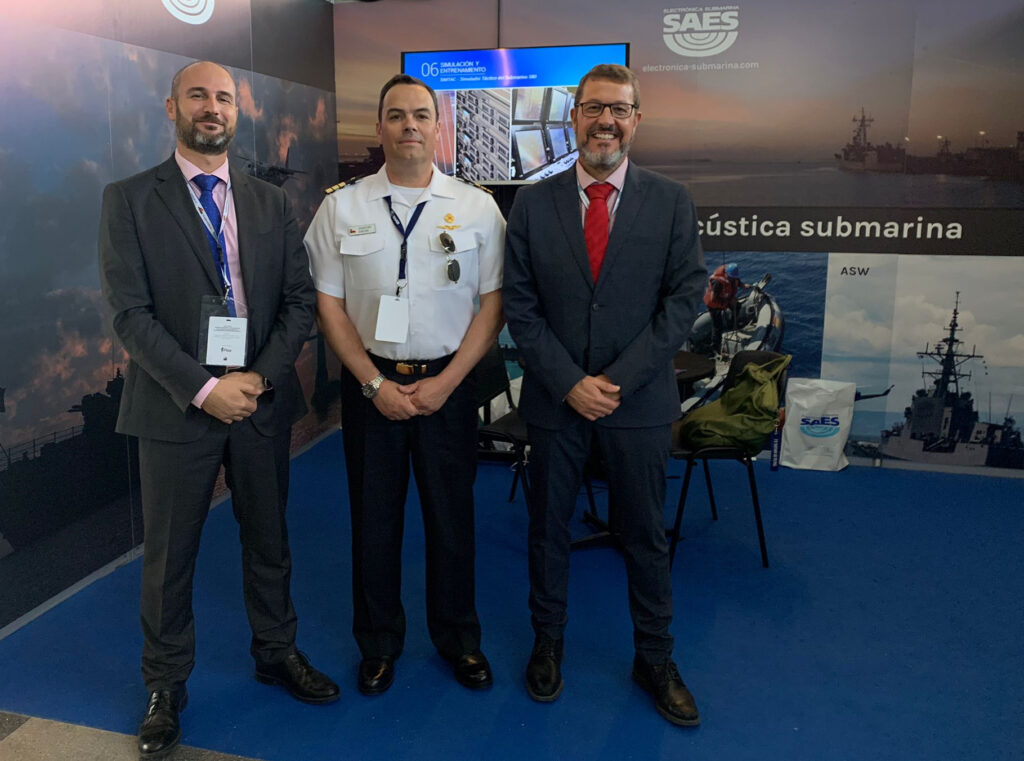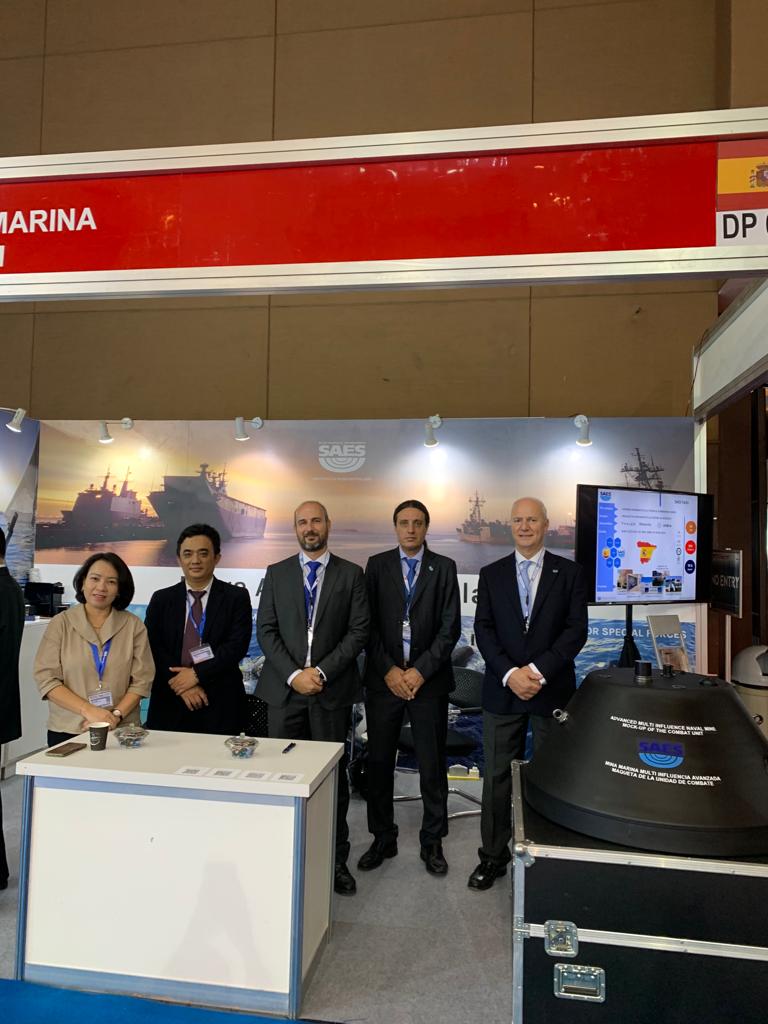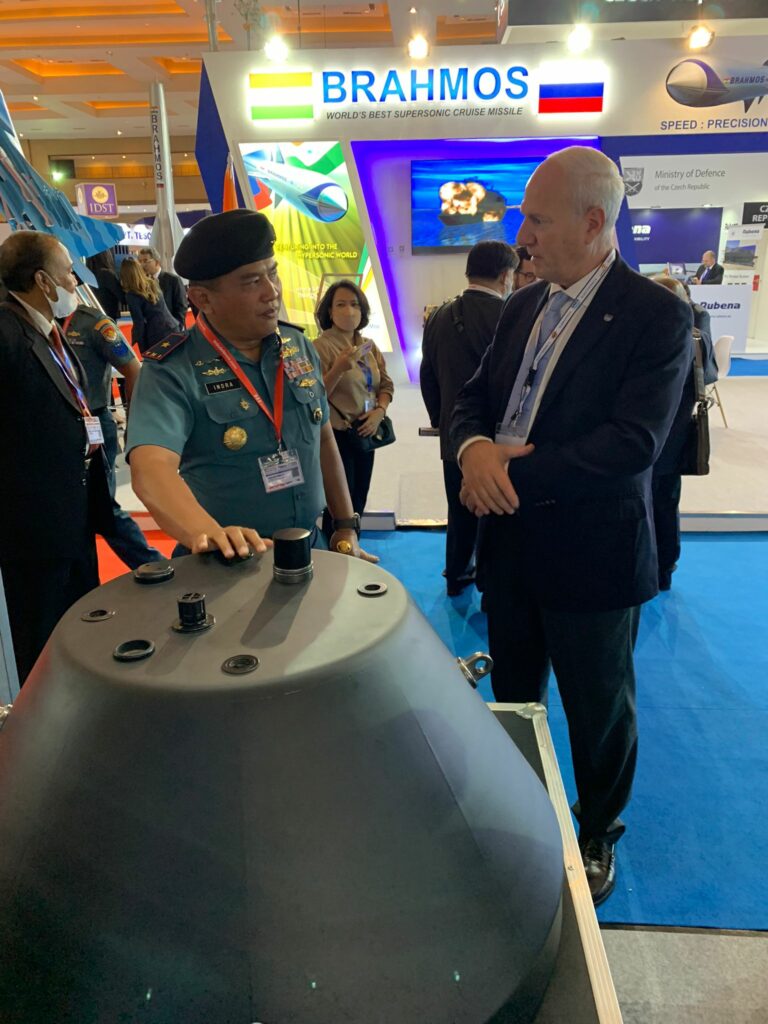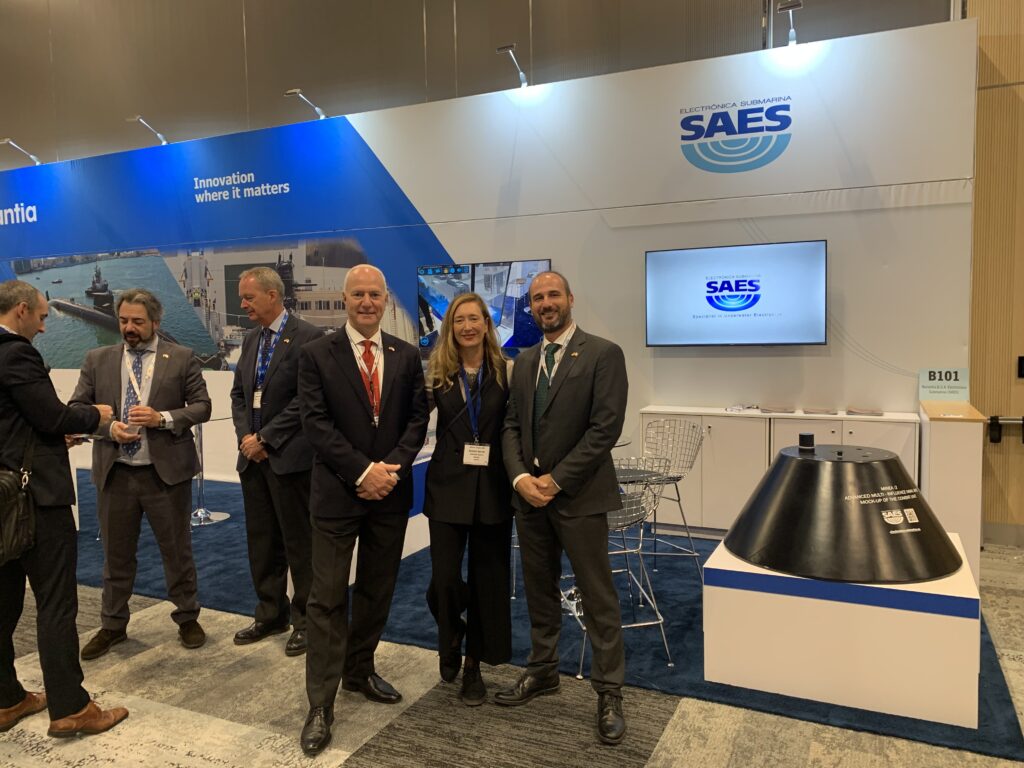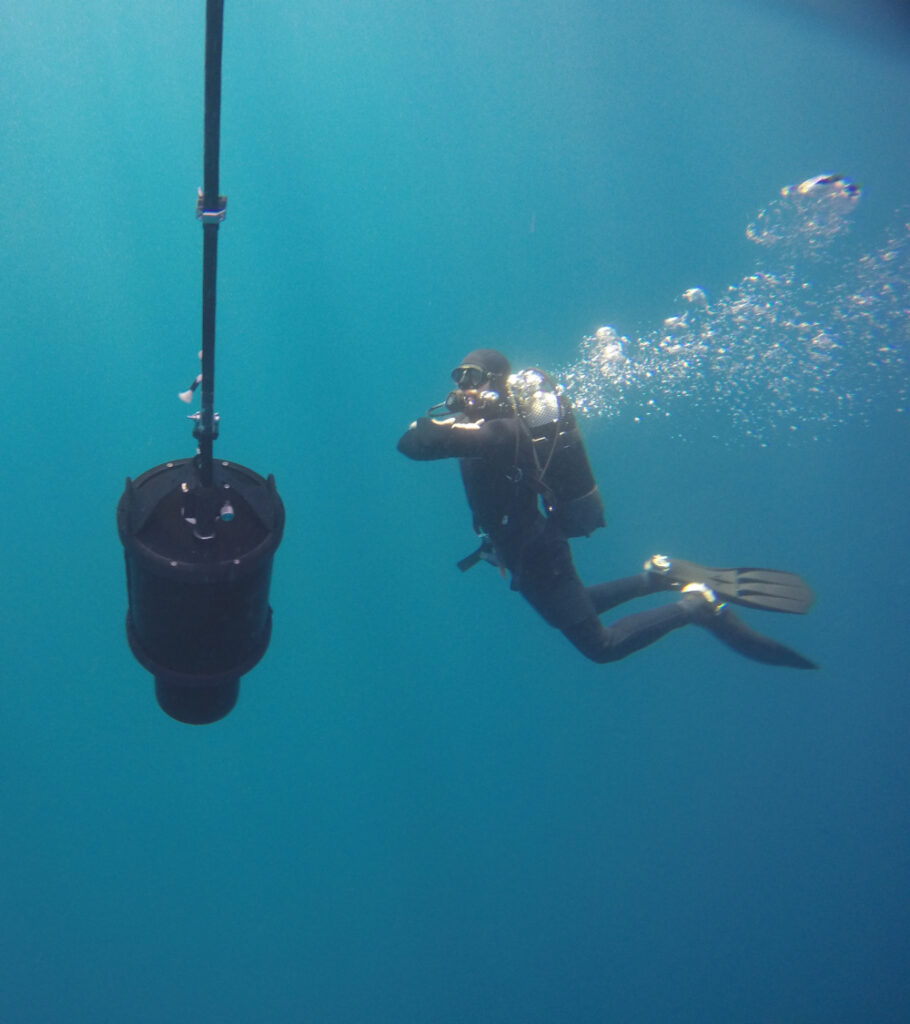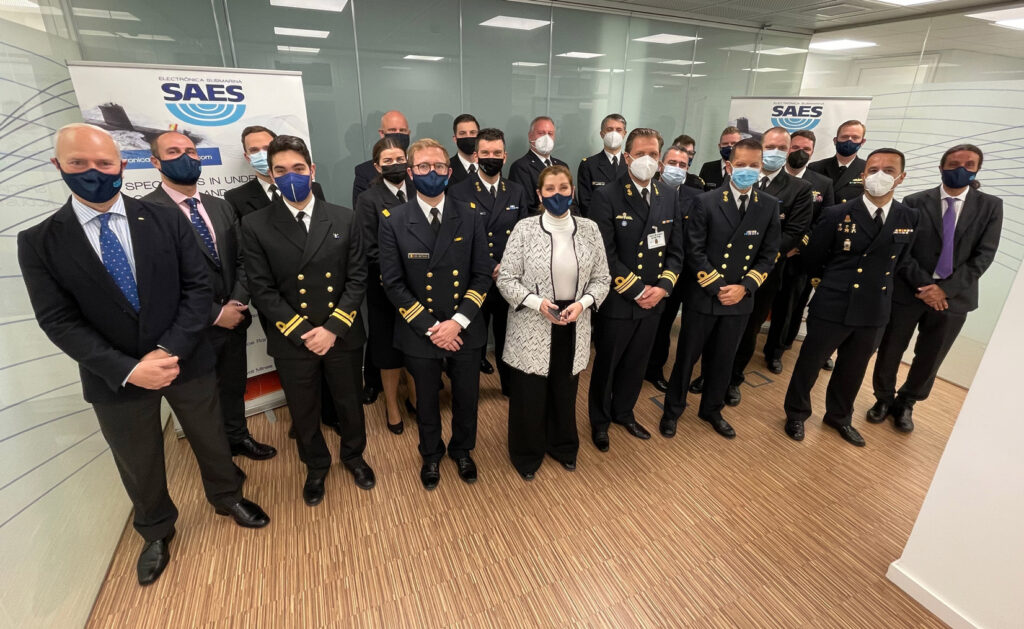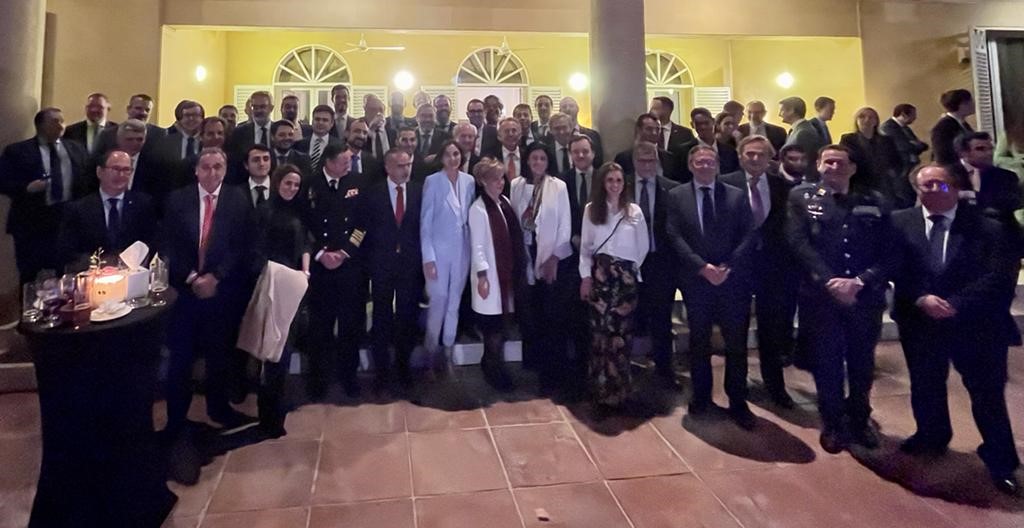The ‘WomIn‘ forum manages to bring together, in its first edition, great references in engineering to promote the role of women in the sector. It was held today at the facilities of the Polytechnic University of Cartagena, with the attendance of more than half a thousand students – schoolgirls and university students. Sara García Alonso, the first Spanish woman Reserve Astronaut of the European Space Agency (ESA), recommends future engineers to have courage to innovate and infinite curiosity.
Sara García Alonso, the first Spanish woman Reserve Astronaut of the European Space Agency (ESA), recommends future engineers to have courage to innovate and infinite curiosity. The molecular biologist has participated in ‘WomIn’, the meeting to awaken STEM vocations that is held at the UPCT, and which has the attendance of more than half a thousand students. Before this large group of students, Sara García, has remembered her early years of studies, “my vocation began in a playful way, my parents encouraged me to investigate, to see things through a microscope and to ask myself many questions. We have to apply technology to almost all sectors, so that society improves, so I ask you not to limit your curiosity”.
She concluded that Science is passion and that she has been selected among 23,000 candidates, through a process of 18 months, “with exams of all kinds, astronauts are dedicated to research from space, so it is always too early to give up, dare to pursue your dreams”. She also explained how most of the technology has been developed by men and for men, a trend that is slowly changing, because “the world cannot afford to lose 50% of talent”.
The meeting has had the testimonies of Beatriz Miguel, first rector of a polytechnic university in Spain; Anabel Díaz, general manager of Uber for Europe, Middle East and Africa; Consuelo Lázaro, director of Operations SAES; Noelia Ortega, director of the Naval and Sea Technology Centre and Cristina Abad, director of Navantia Systems, have made Cartagena today the epicentre of engineering in our country.
They and the more than half a thousand students, who have attended “WomIn, the Women’s Forum in Engineering 2024”, have made the Polytechnic University of Cartagena (UPCT) vibrate.
This innovative day started today in the Isaac Peral Room of the CIM Building with a full house and eyes set on the stars. It could not be otherwise since it brought together two unstoppable forces: that of vocation and that of experience.
At the meeting, Anabel Díaz Calderón, CEO UBER explained that “engineers design the products of the future and women must participate and contribute to the solutions and sustainability of tomorrow”.
For her part, Consuelo Lázaro, Chief Operating Officer at SAES, appealed to social responsibility stating that “there is no need to wait for us to be dictated rules to demand equality, in society and the workplace”.
Throughout the morning, the masterful interventions of these women engineers who are a reference at national and international level, have sought a triple common objective: to value the role of women in engineering, promoting the access of young women to STEM careers (science, technology, engineering and mathematics), to make visible the importance of female talent in industry and social development and to awaken professional vocations among the youngest students.
For her part, Cristina Abad, director of Navantia Systems, highlighted that “we have to make engineering attractive for young women” and Noelia Ortega, from the Naval and Sea Technology Centre, explained that “being a woman is a value that contributes a lot to society, also in engineering”.
Along with them, we have three other women who well represent professionalism and female talent in the Region, Noelia Arroyo, mayor of Cartagena; Azucena Marín, CEO of Comunicología, and Eva Franco, director of Communication, Sustainability and Social Action at Hidrogea, moderator of one of the experience tables.
The initiative of the UPCT has had the collaboration of companies such as SAES, which this year celebrates its 35th anniversary, and Hidrogea, as well as the Naval and Sea Technology Centre.
